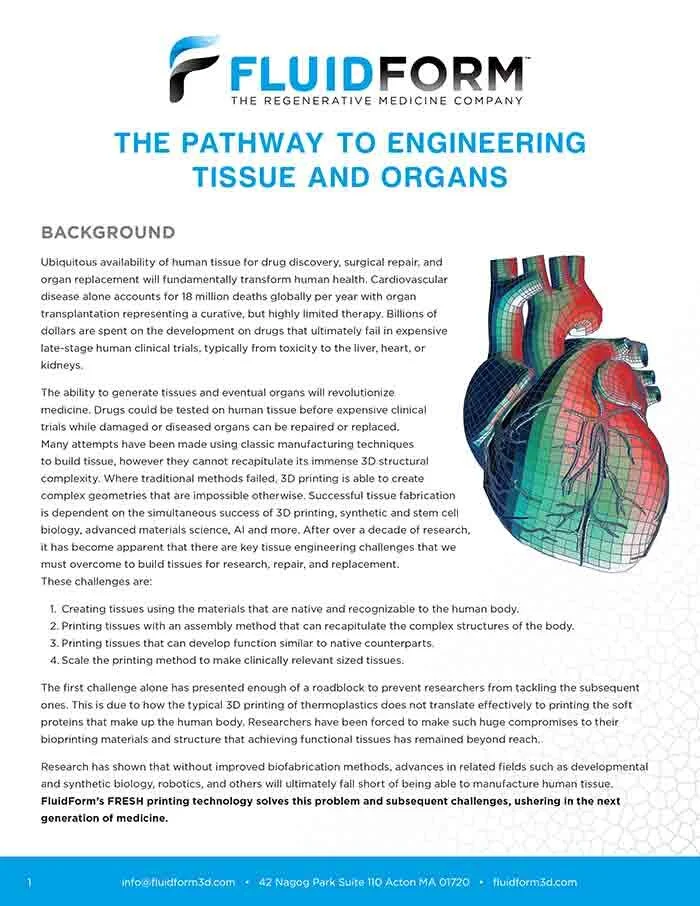Technology
To build tissue, we need to integrate structure and function. We need to control the organization of different cell types, proteins, and growth factors, to recreate the complex physiology present in real tissue.
FluidForm’s patented FRESH™ technology is proven to:
Produce real functional beating human ventricles and heart valves
Recreate complex branching vasculature down to the capillary scale
Tailor alignment of cells to create muscle fibers and tissue anisotropy
Promote tissue regeneration in large animal studies
Scale up to full-size organs
How do we do it?
Our technology leverages the intersection of personalized medicine, synthetic and computational biology, advanced materials, 3D printing, and AI to go from patient data to human tissue.
Our North Star
The Building Blocks of Tissues and Organs
Our goal is to build organs like the heart. To build a heart, you need to be able to build working cardiac muscle that beats and valves that ensure proper blood flow. These ‘building blocks’ address enormous unmet medical needs today, and allow us to build the critical components of tissue and organs while solving real problems along the way.
Programs in development
Cardiotoxicity model for drug discovery
Cardiotoxicity is the most common reason for drug failures in clinical trials as well as for removal of approved drugs from the market. All of the existing in-vitro models for testing cardiotoxicity are insufficient to detect arrhythmias beyond a certain threshold, due to their lack of size and complexity. We are developing an in-vitro human model that detects complex arrhythmias early in the pre-clinical discovery process, allowing drug developers to identify the best candidates to take into human trials and ultimately to patients.
Trans-catheter Aortic Valve
Heart valve disease affects millions of people every year. Existing valves can calcify due to impurities in the manufacturing process, and can only address a fraction of patients. We are developing a valve that reduces the risk of calcification and can be implanted using a minimally invasive approach for broad patient access.





